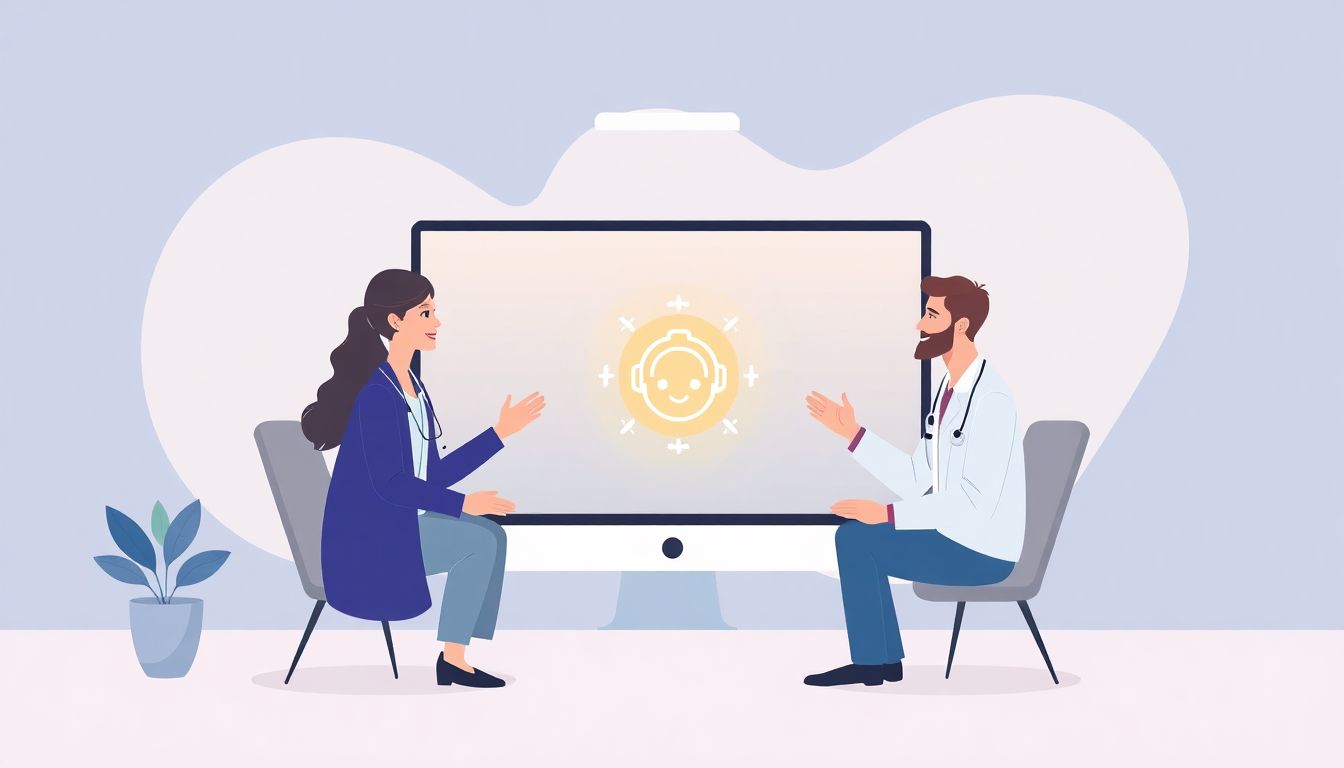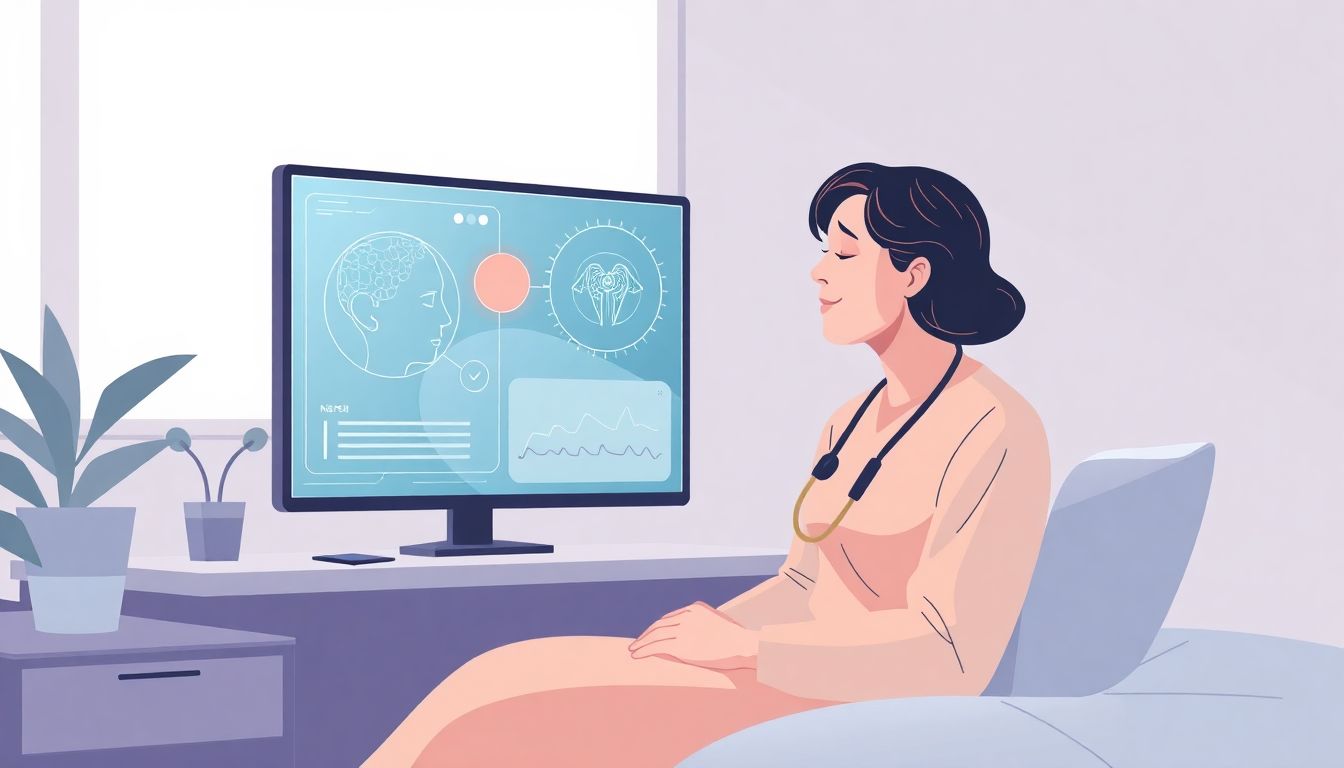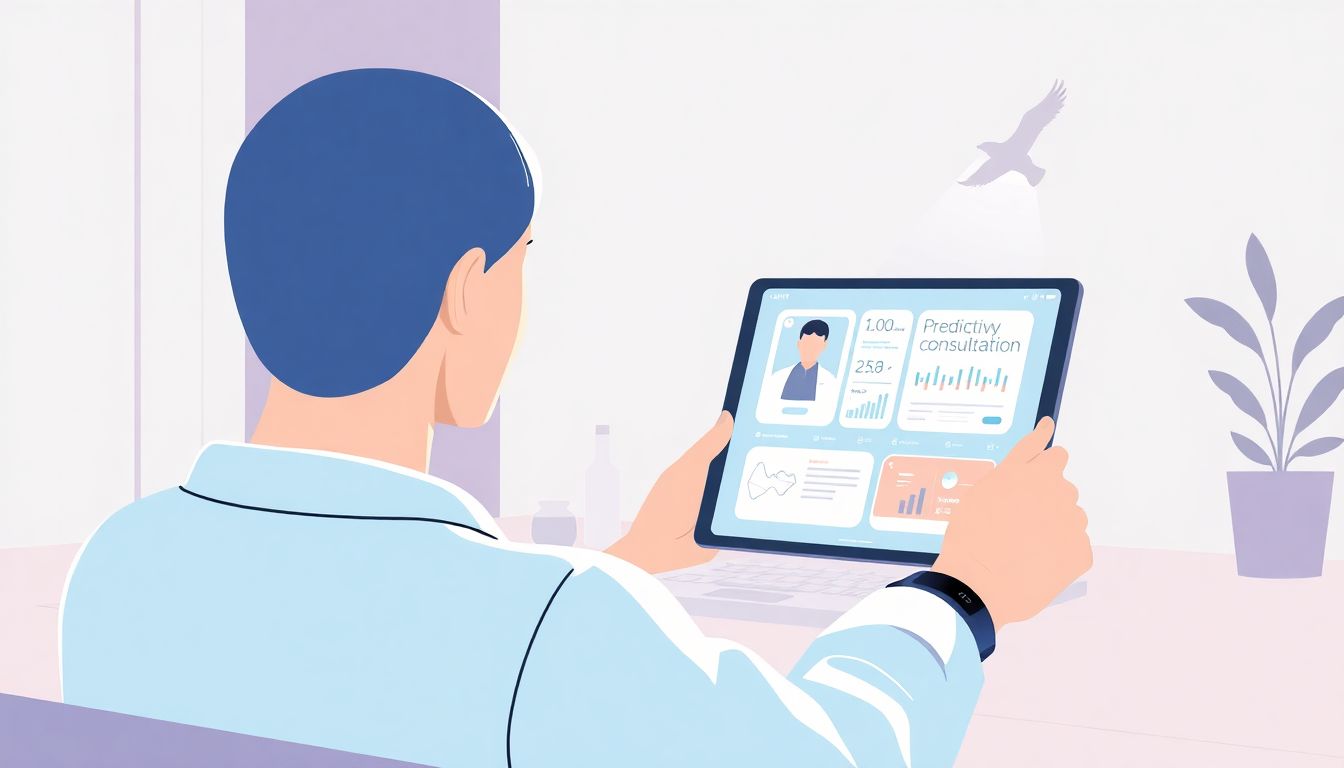Telemedicine is changing the way we access healthcare, but let’s face it, sometimes it can feel a bit impersonal or complicated. If you’ve ever found yourself navigating a maze of virtual consultations and paperwork, you’re not alone. Many healthcare providers and patients share this challenge, and it’s perfectly valid to seek better solutions for a smoother experience.
But what if I told you that incorporating ChatGPT into telemedicine could revolutionize how we connect with healthcare? Stick around, and you might just discover how this AI can ease communication, streamline processes, and create a more personalized touch for patients and providers alike.
In this blog, we’ll explore how ChatGPT can enhance telemedicine services, highlight its benefits, discuss common use cases, and share best practices for successful integration. Get ready to dive deeper into the world of AI-enhanced healthcare!
Key Takeaways
- ChatGPT improves telemedicine by enabling real-time communication, enhancing patient engagement, and simplifying interactions.
- It allows 24/7 access to care, reducing wait times and improving overall patient satisfaction.
- Common uses include virtual consultations, symptom checking, automated triage, and chronic disease management.
- Successful integration requires careful planning, ensuring compatibility with existing systems and adherence to data privacy regulations.
- Best practices involve training for empathy, personalization, and ongoing feedback from patients to maintain trust.
- Challenges include ensuring accuracy, data security, and addressing potential biases in AI responses.
- Future trends indicate more personalized care and integration with wearable devices for real-time health monitoring.

How ChatGPT Can Improve Telemedicine Services
ChatGPT has the potential to significantly enhance telemedicine services in various ways.
By providing real-time communication, it enables healthcare providers to engage with patients more effectively.
This capability translates to improved patient engagement and satisfaction with the care process.
Through automated responses, ChatGPT can streamline patient inquiries, reducing the workload of healthcare staff.
Furthermore, it can enhance the accessibility of services, making it easier for patients to receive care at their convenience.
With its natural language processing capabilities, ChatGPT can interpret patient questions, offering relevant information swiftly.
Healthcare technology can benefit from this AI tool, ultimately leading to better outcomes in virtual healthcare environments.
Benefits of Using ChatGPT in Telemedicine
The benefits of using ChatGPT in telemedicine are numerous and impactful.
One major advantage is enhanced patient care, as automated systems can answer questions at any time.
This 24/7 availability helps reduce wait times, allowing patients to get the information they need immediately.
In addition, ChatGPT fosters cost-effectiveness in healthcare systems by minimizing administrative burdens.
By automating repetitive tasks, healthcare professionals can focus on direct patient care, improving overall efficiency.
Moreover, ChatGPT can assist in making quicker and more accurate diagnoses by analyzing patient-reported symptoms.
All these elements contribute to a supportive healthcare system, leading to improved patient satisfaction and outcomes.
Common Use Cases for ChatGPT in Healthcare
ChatGPT applications in healthcare are versatile and effective.
One common use case is for virtual consultations, where patients can discuss symptoms with an AI before seeing a doctor.
ChatGPT can also facilitate symptom checking, offering initial assessments based on reported conditions.
Automated triage is another significant application, guiding patients to the appropriate level of care efficiently.
Follow-up care can be streamlined with ChatGPT, enhancing communication with patients after their initial appointments.
Additionally, it can be utilized in chronic disease management, reminding patients about medications and appointments.
Patient education is also improved through ChatGPT by delivering crucial healthcare information quickly and accurately.
Implementing ChatGPT in Telemedicine Platforms
Implementing ChatGPT in telemedicine platforms requires careful planning and execution.
First, consider the integration of ChatGPT using API configurations that align with your existing healthcare software solutions.
Ensuring system compatibility is essential to provide seamless service to users.
Data privacy concerns are paramount; therefore, comply with regulatory standards when utilizing AI in healthcare settings.
Creating a user-friendly interface is vital for encouraging patient engagement and suitable interactions.
Scalability in healthcare technology will also play a crucial role in accommodating future growth.
It’s best to undergo usability testing to identify challenges and ensure a smooth user experience with ChatGPT solutions.

Best Practices for Integrating ChatGPT in Patient Interactions
Integrating ChatGPT in patient interactions requires a thoughtful approach to ensure the best outcomes.
Start by training ChatGPT on relevant medical data while ensuring it can recognize the nuances of patient communication.
Provide prompts that encourage empathetic responses, making sure patients feel understood and valued.
For instance, use direct prompts like: “Respond to a patient who feels anxious about their upcoming surgery with reassurance and information.”
Foster personalization by allowing the AI to remember user histories or preferences.
Use prompts such as: “Recall the last appointment for a patient named Jane and ask if she has any follow-up questions.”
Encouraging feedback loops is crucial; ask patients for their thoughts on the AI interaction.
Example prompt: “Ask the patient how they felt about the information provided and if they need anything else.”
Lastly, invest in ongoing usability testing to refine interactions and ensure patient trust remains strong.
Challenges and Considerations When Using ChatGPT in Telemedicine
Using ChatGPT in telemedicine presents several challenges that need addressing to maintain quality care.
One primary concern is maintaining accuracy, as AI can sometimes misinterpret symptoms or provide misleading information.
A prompt to mitigate this can be: “Clarify ambiguous patient symptoms with a follow-up question for better understanding.”
Data security is another crucial issue; handling sensitive patient information requires strong compliance with health regulations.
Set prompts to remind the AI to avoid sharing personal data—like: “Ensure no patient-identifying information is shared in responses.”
It’s essential to address potential biases in AI responses, which can lead to unequal treatment.
For example, use a prompt like: “Generate responses on symptom assessment that encourage equality in care regardless of patient background.”
Finally, be transparent with patients about how ChatGPT is utilized in their care process.
Future Trends of ChatGPT in Telemedicine Services
The future of ChatGPT in telemedicine is promising, with several emerging trends shaping healthcare delivery.
One key trend is the increased use of predictive analytics to personalize patient care effectively.
Consider prompts that leverage past interactions, such as: “Analyze a patient’s previous visits to suggest proactive health measures.”
Integration with wearable devices is also on the rise, providing real-time health data to enhance AI responses.
A related prompt could be: “Adjust health advice based on real-time data from a patient’s wearable health monitor.”
Furthermore, AI-driven automation will likely streamline administrative tasks, freeing up healthcare providers for more personalized patient care.
Use prompts to assist in task delegation, like: “Schedule follow-ups based on patient needs and back-end data analysis.”
As virtual health continues evolving, ChatGPT’s capabilities will become increasingly integral to delivering efficient, responsive, and high-quality telemedicine services.

Future Trends of ChatGPT in Telemedicine Services
The future of ChatGPT in telemedicine holds exciting possibilities that can reshape healthcare delivery.
One anticipated trend is the growth of predictive analytics to tailor treatments based on patient history and behavior.
For straightforward implementation, you can engage ChatGPT with prompts like: “Analyze a patient’s past interactions and suggest personalized health measures.”
This level of customization can foster a deeper patient connection and enhance adherence to treatment plans.
Moreover, we can expect more integration with wearable health technologies, allowing real-time data analysis for improved patient feedback.
A practical prompt for this scenario could be: “Adjust health recommendations based on the latest data from a patient’s fitness tracker.”
AI’s role in automating routine administrative tasks will likely expand, which can free healthcare professionals to spend more time on direct patient care.
To assist with scheduling, you might use: “Generate a follow-up schedule based on patient availability and care needs.”
We are also likely to see more advancements in the capability of ChatGPT to provide mental health support, offering timely resources and checking on patients’ emotional well-being.
You can prompt the AI by saying: “Check in with a patient about their mental health and offer coping strategies if they’re feeling down.”
As telemedicine evolves, continuing to refine and expand ChatGPT’s capabilities will be crucial in ensuring high-quality and accessible healthcare for all.
Conclusion: Maximizing Telemedicine Services with ChatGPT
To maximize telemedicine services, integrating ChatGPT effectively is key to enhancing patient care.
Utilizing AI for patient interactions not only improves efficiency but also enriches the overall healthcare experience.
Start with a strategic plan and prioritize user-friendly interfaces that cater to both patients and providers.
Encourage feedback and continuously refine your approach based on real experiences.
Leverage the power of ChatGPT from virtual consultations to follow-up care, ensuring you meet patients’ diverse needs.
Remember, the ultimate goal is to create a supportive healthcare environment where technology complements the human touch.
As AI continues to advance, staying proactive and embracing future trends will make your telemedicine services more adaptable and beneficial.
In short, ChatGPT is more than just a tool; it’s a partner in delivering superior healthcare in the growing realm of telemedicine.
FAQs
ChatGPT enhances telemedicine by providing instant responses, streamlining patient interactions, reducing wait times, improving access to healthcare, and supporting clinicians in diagnosis and administrative tasks.
Common use cases include patient triage, appointment scheduling, answering FAQs, offering medication information, and providing health education to improve patient engagement and outcomes.
Challenges include ensuring data privacy, maintaining accuracy in responses, keeping up with medical guidelines, and integrating with existing systems, all of which are crucial for effective implementation.
Best practices include training staff on usage, continuously updating the model with relevant data, ensuring user-friendly interfaces, and regularly evaluating interaction outcomes to enhance patient experience.
